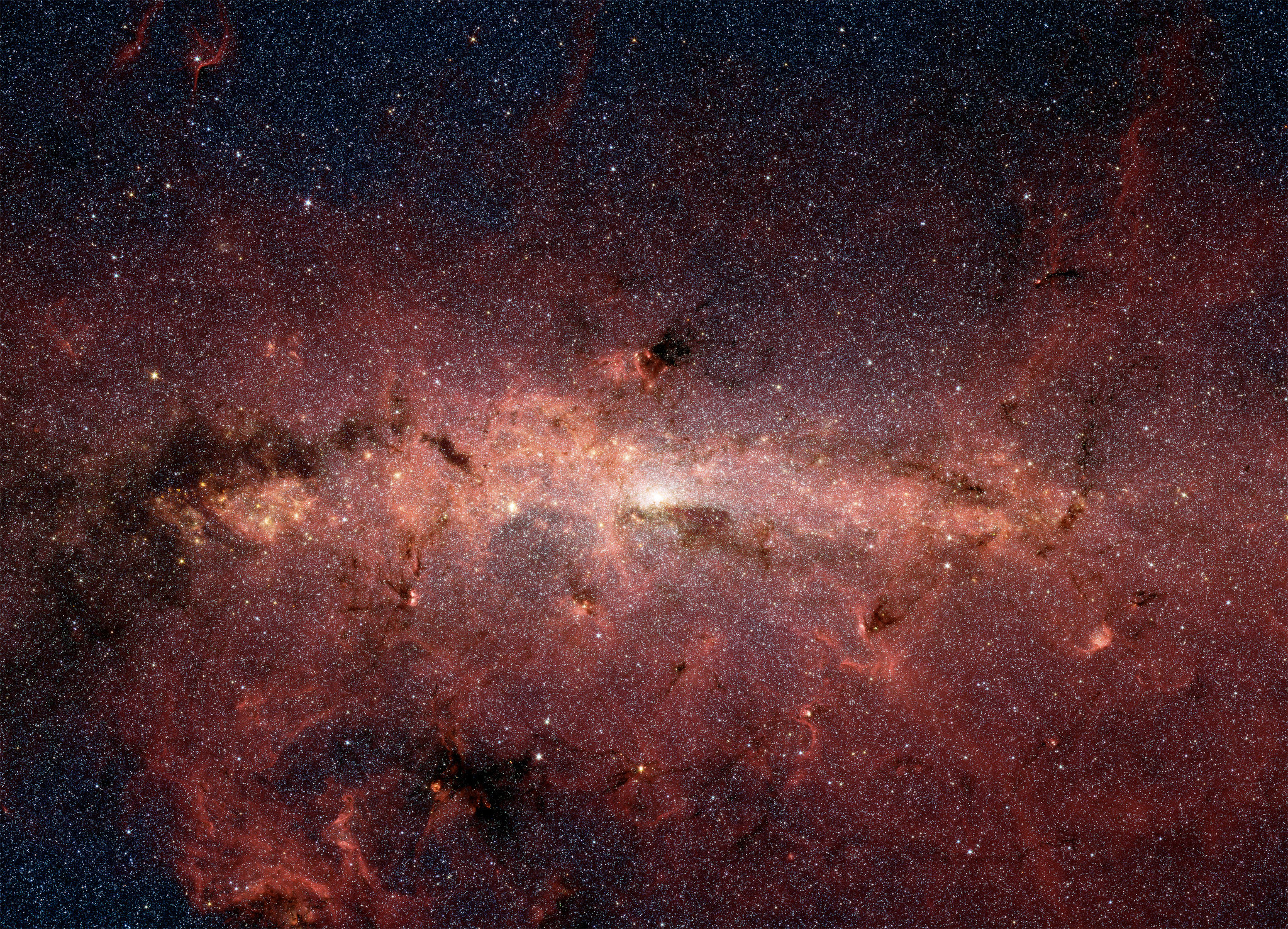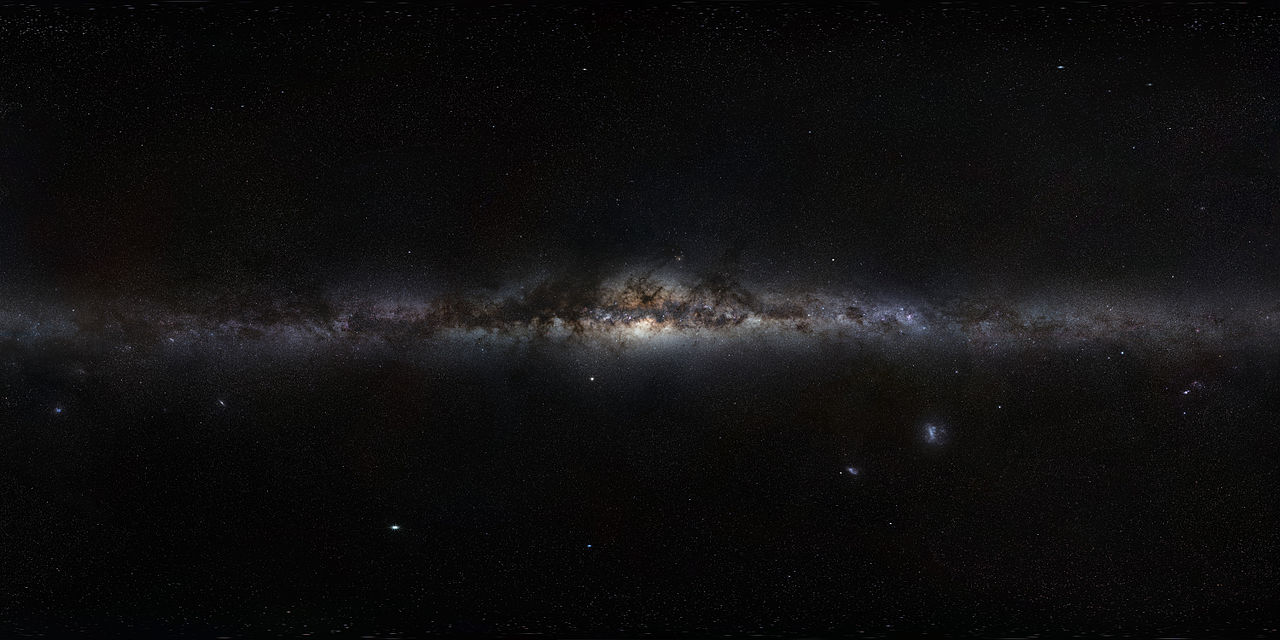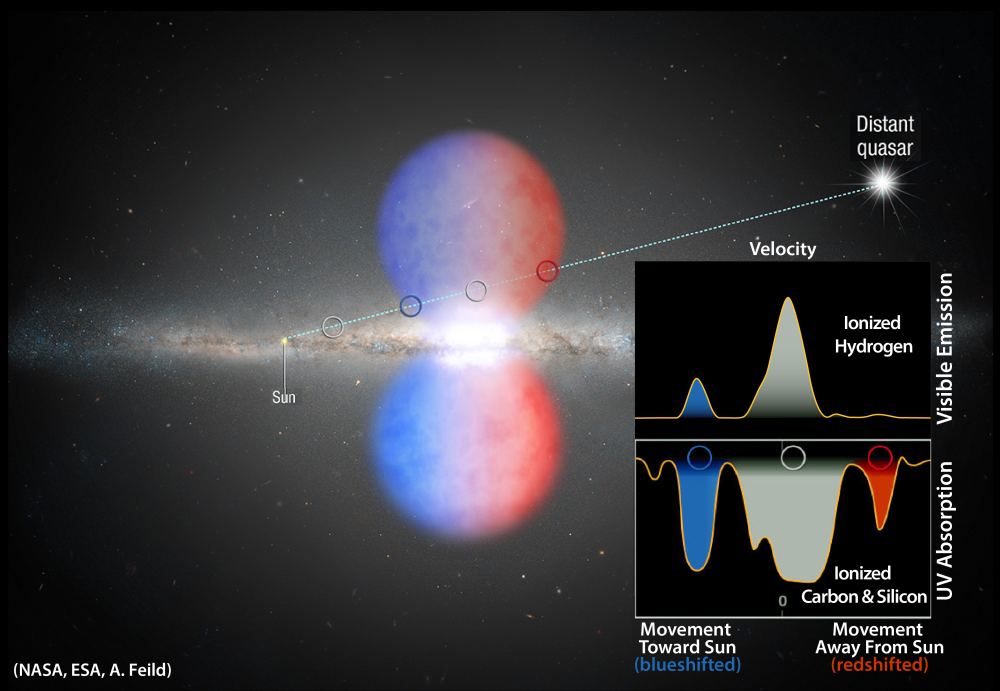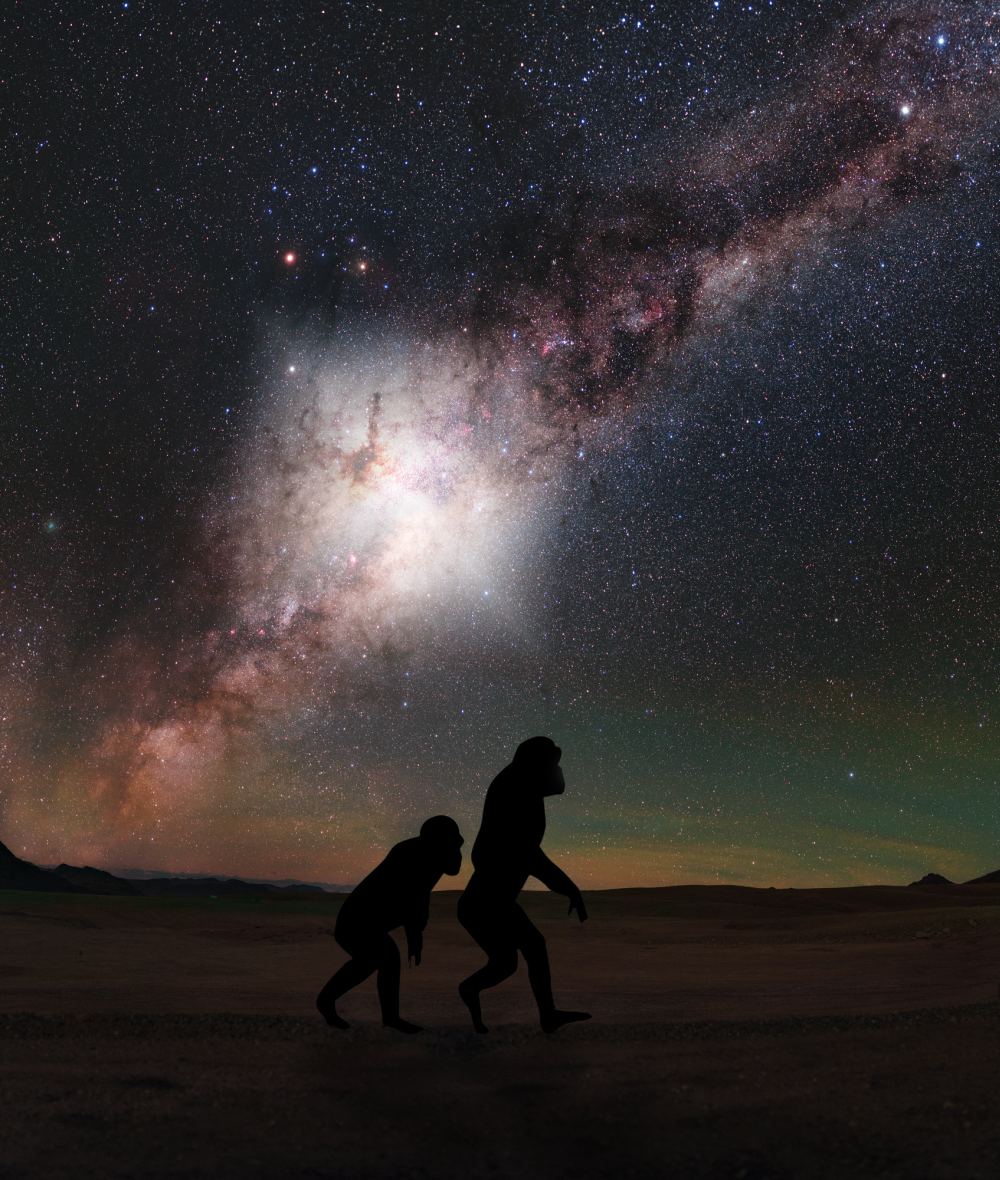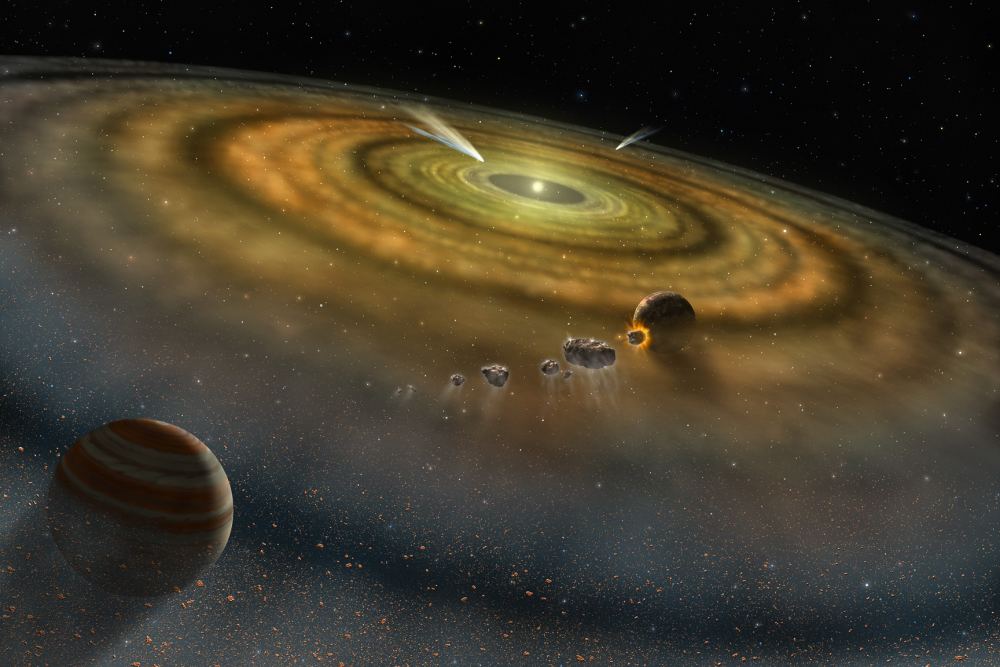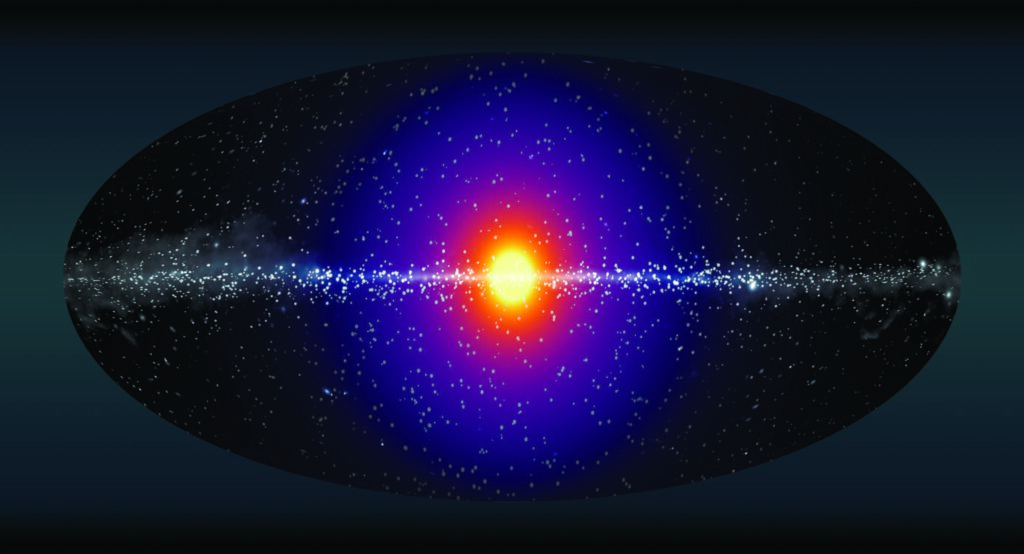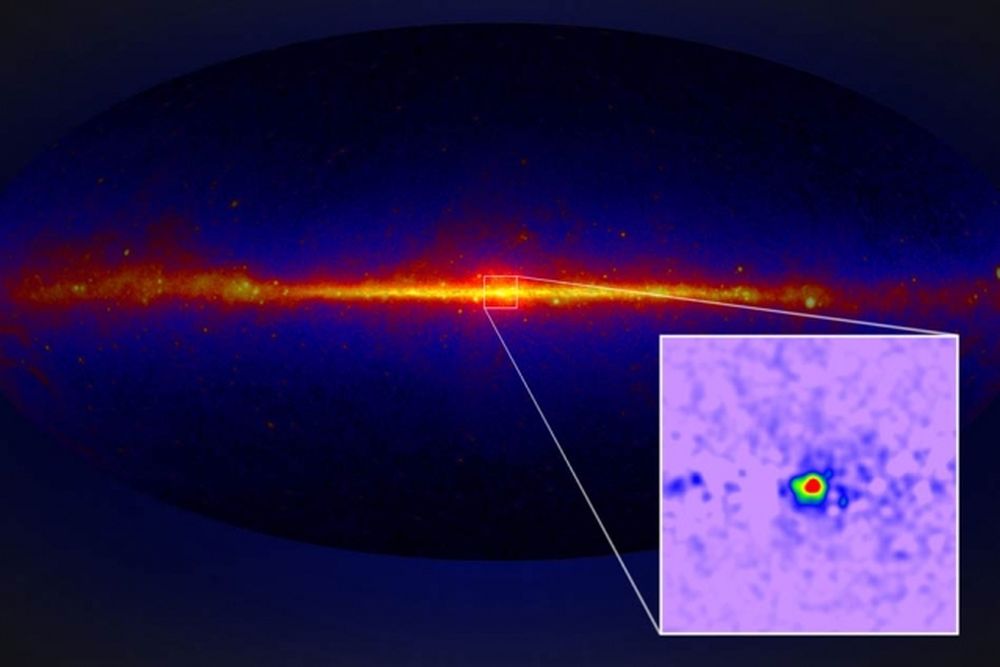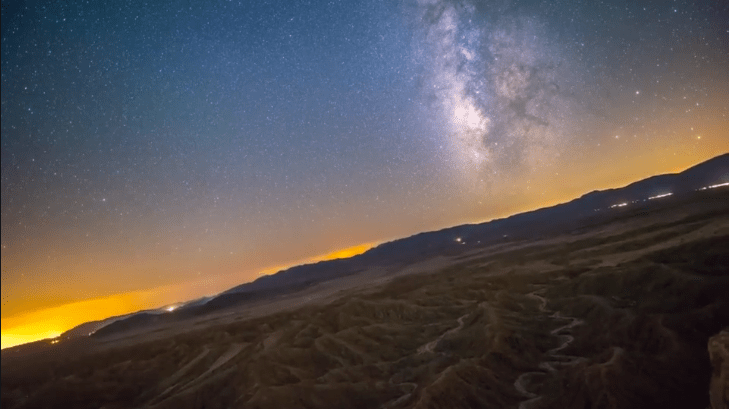Astronomers are very sure that dark matter exists, but they’re not sure at all what it’s made of.
The problem is that it isn’t just dark, it’s invisible. As far as we know, dark matter doesn’t emit light, absorb light, reflect light, refract light, scatter light, diffract light, or really have anything to do with light at all. This makes it hard to study. We know that dark matter exists, however, through its gravitational effects. Even though it’s invisible, it still has mass, and so the dark matter in our universe (which, by the way, makes up 85% of all the mass in the cosmos) can affect the motions of normal (or light-interacting) matter, like stars and galaxies.
Continue reading “Decaying Dark Matter Should be Visible Here in the Milky Way as a Halo Around the Galaxy”


